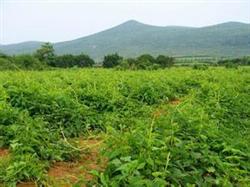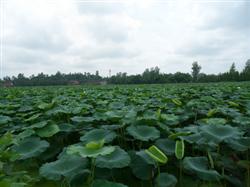How to prevent diseases of Chinese yam in high temperature and rainy period

At present, there are three main diseases of Chinese yam, namely, Fusarium wilt, anthracnose and brown rot. These three diseases are mainly transmitted by Rain Water and watering, and now they are in a period of high temperature and heavy rain, which also creates conditions for the occurrence of these three diseases. In the early stage of the disease, Fusarium wilt was mainly characterized by fusiform brown patches at the base of the stem, which gradually expanded around the stem, resulting in the decay of the epidermis at the base of the stem, the yellowing and shedding of the upper leaves, the withering of the vines and the browning inside the diseased stems. root infection can cause round to irregular brown spots around the lenticels. Vegetable farmers can use 1000 times of 50% chlorobromoisocyanuric acid or 40% methyl thiophanate sulfur suspension or 70% mancozeb for root irrigation. Anthracnose of Chinese yam is mainly harmful to leaves and stems. The disease spot on the leaf is round to oval, the middle gray to dark gray edge is dark brown, and there are small black spots in the later stage; the stem disease spot is gray-white in the middle, with black irregular spots all around, and in severe cases, the disease spot is even into pieces until the whole plant turns black and withered. Vegetable farmers can use 1500 times solution of 25% prochloraz mixed with 1500 times solution of 10% benzimiconazole for prevention and control. Brown rot is mainly harmful to the tuber of Chinese yam, and the diseased part of the tuber shows a bad rot-like irregular brown spot. Vegetable farmers can use 1000-fold solution of 70% thiophanate or 3000-fold solution of allicin for root irrigation.
- Prev

Causes and control methods of stiff seedlings in rapeseed
Causes and control methods of stiff seedlings in rapeseed
- Next

Cultivation techniques of precocious Lotus Root
According to the adaptability of lotus root to water level, it can be divided into two ecological types: shallow water lotus root and deep water lotus root. Shallow lotus root is suitable for water level of 10 cm to 20 cm, and the maximum water-resistant depth is 30 cm to 50 cm. Deep-water lotus root is suitable for water level of 30-50 cm, and the maximum water-resistant depth is 1-1.2 m. The general principle of shallow lotus root water layer management is: front shallow, medium deep,.
Related
- Where is it suitable to grow horseradish in China? it is expected to see the middle altitude horseradish in Alishan.
- How to prevent tomato virus disease reasonably? (Control methods included)
- Many people like to plant towel gourd on the balcony. What are the main points of this method and management?
- What crops can chili peppers be mixed with?
- Fertilization techniques and matters needing attention in Tomato
- What are the grafting techniques for peach seedlings in spring?
- Harm and control methods of root swelling disease of Chinese cabbage
- What are the pests of sweet potatoes? How to prevent and cure it?
- Symptoms, causes and Control methods of navel Rot in Tomato
- The cause of "Cucumber rotten bibcock" in Farmers' planting Cucumber and its Control Plan

